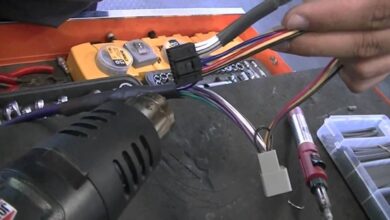
Uncommon Power Seat Issues Experienced by Technicians: Unique Problem Scenarios
Power seats, a staple in modern vehicles, offer a level of comfort and customization many drivers appreciate. However, beneath the surface of convenient adjustability lies a complex system prone to unique and sometimes perplexing issues for automotive technicians. Beyond the common blown fuse or faulty motor, certain power seat malfunctions present specialized challenges that require keen diagnostic skills and creative problem-solving. This article delves into some uncommon power seat problems technicians may encounter in the field.
Phantom Movements and Intermittent Operation
One bizarre issue involves the power seat seemingly operating on its own. Drivers report the seat randomly adjusting position while driving or even when the vehicle is parked. This “phantom movement” is often attributed to a short circuit or voltage leak within the seat’s wiring harness. Moisture intrusion, rodent damage, or chafing caused by repetitive movement can all contribute to this intermittent short. Identifying the specific location can be a painstaking process requiring a multimeter, wiring diagrams, and a systematic approach to tracing the circuit.
The Case of the “Creeping” Seat
Another less common issue is the “creeping” seat. This occurs when the seat slowly and gradually moves forward or backward without any input from the driver. This is not a complete malfunction, but rather a gradual slippage. This problem often points to a worn-out or damaged seat track gear. The seat track, responsible for the forward and backward movement, utilizes a series of gears to lock in place. Over time, these gears can wear down or become damaged, leading to a slow release and the creeping sensation. Choosing the Auto Repair in Downingtown, PA based service is the right choice in this matter.
Locked-Up Adjustments and Communication Errors
Sometimes, all power seat adjustments will become completely locked. While a blown fuse is the first culprit to investigate, a deeper issue may lie within the seat’s control module. This module, essentially a small computer dedicated to managing the seat’s functions, can experience internal failures or corrupted programming. In some cases, the module may even fail to communicate with the vehicle’s main computer, triggering a diagnostic trouble code (DTC).
The Unresponsive Headrest and Lumbar Support
Beyond the primary fore-aft and up-down adjustments, the headrest and lumbar support functions can also develop unique problems. A common issue is a failed motor within the headrest or lumbar support mechanism, preventing the driver from adjusting it. Sometimes, a broken cable or linkage within the mechanism can also be the cause. Accessing these components often requires partially disassembling the seat, demanding careful attention to detail and knowledge of the seat’s internal structure. Replacing the entire headrest or lumbar support assembly might be necessary if individual part replacement is not feasible.
Conclusion
Power seat malfunctions can range from simple fixes to complex diagnostic challenges. Successfully diagnosing uncommon issues requires a combination of technical expertise, meticulous inspection, and a thorough understanding of the power seat’s intricate electrical and mechanical systems. By being aware of these unique problem scenarios, technicians can better equip themselves to provide accurate diagnoses and efficient repairs, ensuring drivers can once again enjoy the comfort and adjustability their power seats offer.




